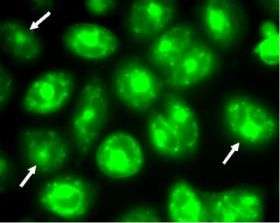A new way to look at lung cancer and tobacco carcinogens

Two types of cancer-causing agents in cigarettes—a nicotine-derived chemical and polycyclic aromatic hydrocarbons (PAHs) are the main culprits in lung cancer. Exposure to tobacco smoke – both mainstream and second-hand – is a leading cause of cancer death in the United States.
Previous studies have shown how PAHs damage DNA, with the emphasis on how PAHs bind directly to DNA itself, leading to the mutations in critical genes that cause disease. Now, researchers at the University of Pennsylvania’s School of Medicine’s Center of Excellence in Environmental Toxicology (CEET) have shown that PAHs, via oxidative stress, can also led to mutations in critical genes important in lung cancer. The findings were published online last week in the Proceedings of the National Academy of Sciences.
“This is the first demonstration of this link,” says co-author Ian Blair, PhD, Professor and Vice Chair of the Department of Pharmacology . “This is a second, but indirect, way in which PAHs can cause cancer. We also know that PAHs can also cause cancer directly.”
Several genetic studies have also shown that the enzymes responsible for generating the oxidative stress from PAHs are overexpressed in lung cancer tumor tissue and esophageal cancers, explains Trevor Penning, PhD, CEET’s director and the study’s senior author. “Our study also shows that those same enzymes, called AKRs, are responsible for the oxidative stress from PAHs in the human lung cells we used in our experiments.”
Oxidative stress is the accumulation of destructive molecules called free radicals that can lead to cell death. Free radicals damage cell membranes, proteins, or genetic material by “oxidizing” them, the same way oxygen causes iron to rust.
The AKR enzymes transform PAHs to produce oxygen free radicals. These oxygen radicals bind to DNA, and if this damage is not repaired it leads to mutations that are carried through to the next generation of cells.
Penning also mentions another genetic ramification due to this association. A recent microarray study of all 30,000 human genes asked what genes were most over-expressed in non-small cell lung carcinoma. Of the eight genes that were most abundantly overexpressed, two were AKR enzymes.
“Because this study relates AKR overexpression to oxidative damage of DNA with lung cancer, it makes you wonder if the 10 percent of smokers that are most prone to lung cancer, have either dysregulated AKR expression or genetic differences in their AKRs that predispose them to disease,” says Penning. Since oxidative stress is also linked to tumor promotion, it is possible that his link may also explain other stages of the disease process.
“These findings go beyond the first step of DNA damage and may provide a reason why disease progresses,” says Penning.
Source: University of Pennsylvania





















